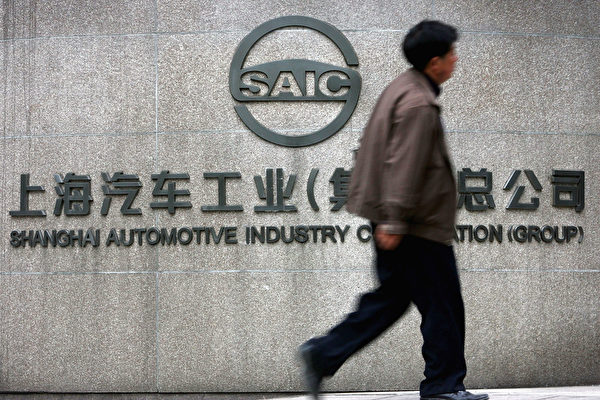China’s largest automaker, SAIC Motor, has faced challenges with declining sales, poor performance in high-end new energy vehicles, and the levying of tariffs by the European Union, leading to a change in leadership. On Wednesday, Wang Xiaoqiu was appointed as the new chairman of SAIC Motor, with Jia Jianxu as the president. Additionally, the latest data shows that SAIC Motor has slipped to the second spot in terms of export rankings.
On the afternoon of July 10th, SAIC Motor announced that Chen Hong retired due to reaching the retirement age and resigned from the position of chairman and other roles. Board director Wang Xiaoqiu has been appointed as the chairman of the 8th board of directors, relinquishing the role of president. Following the chairman’s nomination, Vice President Jia Jianxu was appointed as the president.
With this change, the “Chen Hong era” of SAIC Motor, which lasted for a decade, has come to an end.
SAIC Motor, China’s largest domestic automaker in terms of sales volume, is facing pressure to transform. Its annual sales have dropped from over 7 million vehicles in 2018 to 5.02 million vehicles in 2023. In 2023, SAIC Motor sold a total of 5.021 million vehicles, with total operating income of 744.71 billion yuan. Moreover, sales are still on a downward trend.
The latest data released by SAIC Motor shows that sales in June were 300,500 vehicles, a 25.92% year-on-year decrease. In the first half of this year, cumulative sales reached 1.82 million vehicles, an 11% decrease compared to the same period last year. The performance of 1.82 million vehicles only represents 33.3% of the company’s target of selling 5.45 million vehicles this year.
Against the backdrop of consecutive years of declining sales, SAIC Motor has maintained its position as the top-selling Chinese automaker for 18 years and is now facing challenges.
Furthermore, the overall economic environment in China is deteriorating, with the automotive market facing an oversupply issue, and sales of traditional fuel-powered vehicles are experiencing a “cliff-like decline,” making the situation even more challenging for SAIC Motor.
On July 10th, a survey by the China Automobile Dealers Association showed that in the first half of 2024, only 18.4% of dealerships had completed their sales tasks, 34.8% had completed over 80% of their tasks, while 13.5% of dealerships had yet to fulfill 50% of their tasks. The automotive sales sector is under significant pressure.
The China Association of Automobile Manufacturers stated that looking ahead to the second half of the year, the issue of insufficient domestic consumer confidence persists, the international trade situation is becoming more severe, industry competition is intensifying, and the overall operation is facing greater pressure.
At the same time, the European Union began imposing temporary anti-subsidy tariffs on electric vehicles imported from China starting from July 5th, in response to unfair subsidies by the Chinese authorities in the electric vehicle industry and to prevent the influx of cheap electric vehicles manufactured using state subsidies into Europe.
SAIC Motor was identified by the European Commission as one of the less cooperative companies during the previous anti-subsidy investigation and has been subjected to the highest anti-subsidy tariff of 37.6%.
This means that the total tax rate for SAIC Motor’s export of electric vehicles to the EU has increased to 47.6%. Industry experts predict a significant decline in SAIC Motor’s exports of electric vehicles in the short term.
According to data released by the China Association of Automobile Manufacturers on July 10th, the top five automakers in terms of vehicle exports in the first half of this year were Chery Automobile, SAIC Motor, Chang’an Automobile, Geely Automobile, and BYD. Among them, SAIC Motor exported 439,000 vehicles, a nearly 10% decrease, sliding from the top position in export rankings to the second position.

